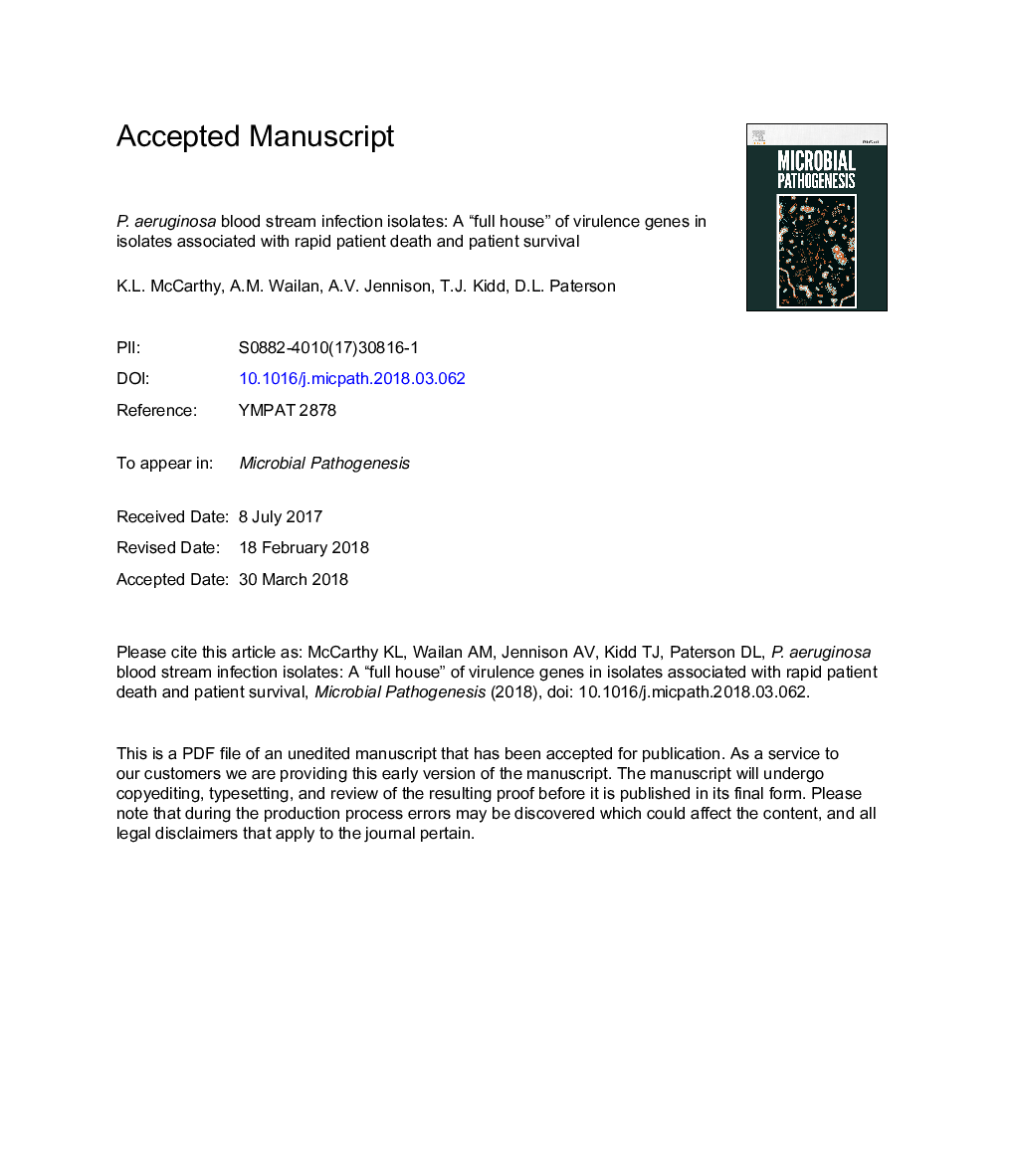| Article ID | Journal | Published Year | Pages | File Type |
|---|---|---|---|---|
| 8749477 | Microbial Pathogenesis | 2018 | 19 Pages |
Abstract
We have recently characterised the epidemiology of P. aeruginosa blood stream infection (BSI) in a large retrospective multicentre cohort study [1]. Utilising corresponding patient BSI isolates we aimed to characterise the genotypic virulence profile of the P. aeruginosa isolates that were associated with rapid death in the non-neutropenic host. Five P. aeruginosa BSI episodes were identified from a larger cohort of P. aeruginosa BSI episodes previously described by McCarthy et al. [1]. The genotypic profile of another 5 isolates from this cohort in whom the non-neutropenic host had survived one year post the BSI was also analysed for comparison. These isolates underwent Illumina whole genome sequencing, de novo assembly and annotation. A comprehensive suite of virulence genes was collated from the Pseudomonas Genome Database (http://www.pseudomonas.com/) and were searched by BLAST based analysis in assemblies of all BSI isolates [2]. There was extensive conservation of virulence genes across all of the BSI isolates studied. The exoU gene was found in two isolates from patients who died rapidly and in one isolate from a patient that survived one year post BSI. The higA and higB genes were detected in all isolates. The exlA gene was not detected in any of the isolates studied. These findings suggest that to cause a BSI that it is only the virulent P. aeruginosa isolate that succeeds. The virulence gene profile seen was independent of patient outcome. Further phenotypic correlation is required to determine if there is any difference in genotypic expression by the BSI isolates that were associated with rapid death of the host and those BSI isolates associated with host survival at one year.
Related Topics
Life Sciences
Immunology and Microbiology
Microbiology
Authors
K.L. McCarthy, A.M. Wailan, A.V. Jennison, T.J. Kidd, D.L. Paterson,
